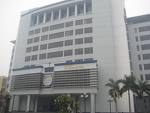SoICT is a scientific symposium for research in all major areas of computing. The aim of the symposium is to bring together researchers and practitioners from academia, industry and government to advance the state of the art and to scale up their application in industries. Authors are invited to submit both research and tool papers. The scientific program will include keynote talks, paper presentations, tutorials and workshops. There will be a school preceding the conference aiming to postgraduate students and researchers from academia and industry.
The conference solicits submission of research papers in all major areas of computing, organized into the following five scopes: Innovative Computing Algorithms and Paradigms, Knowledge-based and Information Systems, Computer and Communication Engineering, Software Engineering and Applications.
The proceedings of the symposium will be published in the ACM Digital Library as a volume with ISBN 978-1-4503-0105-3 in ACM International Conference Proceedings Series (ACM ICPS).
The symposium language is English. All contributions should be
original and not published elsewhere or intended to be published
during the review period. Submitted papers should be prepared in ACM
style and should not exceed 8 pages.
Vietnamese people, in order to get more information, should click here
|
Hanoi (River Interior), with estimated population nearly 6.5 million (2009), is the capital and second-largest city of Vietnam. The city is located on the right bank of the Red River.
October 2010 will officially mark 1000 years of the establishment of the city. On this occasion, Hanoi has been named as one of the world's "Top Destinations 2010".
Hanoi has been inhabited since at least 3000 BC. One of the first known permanent settlements is the Co Loa citadel, founded around 200 BC.
In 1010, Ly Thai To, the first ruler of the Ly Dynasty, moved the capital of DaiViet, the Great Viet (then the name of Vietnam) to the site of the Dai La citadel. Claiming to have seen a dragon ascending the Red River, he renamed it to Thang Long (Ascending dragon) - a name still used poetically to this day.
In 1831, the Nguyen emperor Minh Mang renamed it to Hanoi (can be translated as Between Rivers or River Interior) .
   
|
Hanoi University of Technology (abbreviated HUT, also called in French "Institut de Polytechnique de Hanoi"), the fifth oldest universities in Vietnam, founded in 1956, looking out onto the Park of Reunification, is the first and largest technical university in Vietnam.
Thanks to the first ranking in Vietnam technology training university, thousands of engineers have graduated and are now serving in key industrial and scientific areas in Vietnam. Many of them hold important positions in the government.
|

|
Established in March of 1995, Faculty of Information Technology of Hanoi University of Technology is one of seven key nationwide faculties of information technology. After 15 years since establishment, our School has managed to build a firm foundation with a qualified staff, high training quality, efficient technology transfer and high quality of science research.This foundation plays an important role in the development and integration process. Engineers, masters, and doctors trained by the Faculty are highly appreciated in the society. Many of them have become managers or experts in their working fields. Our School has established good relationship with many research and training organizations in Vietnam and all over the world. The school has been developed and renamed to School of Information and Communication Technology in 2009 (abbreviated SoICT). |

|





